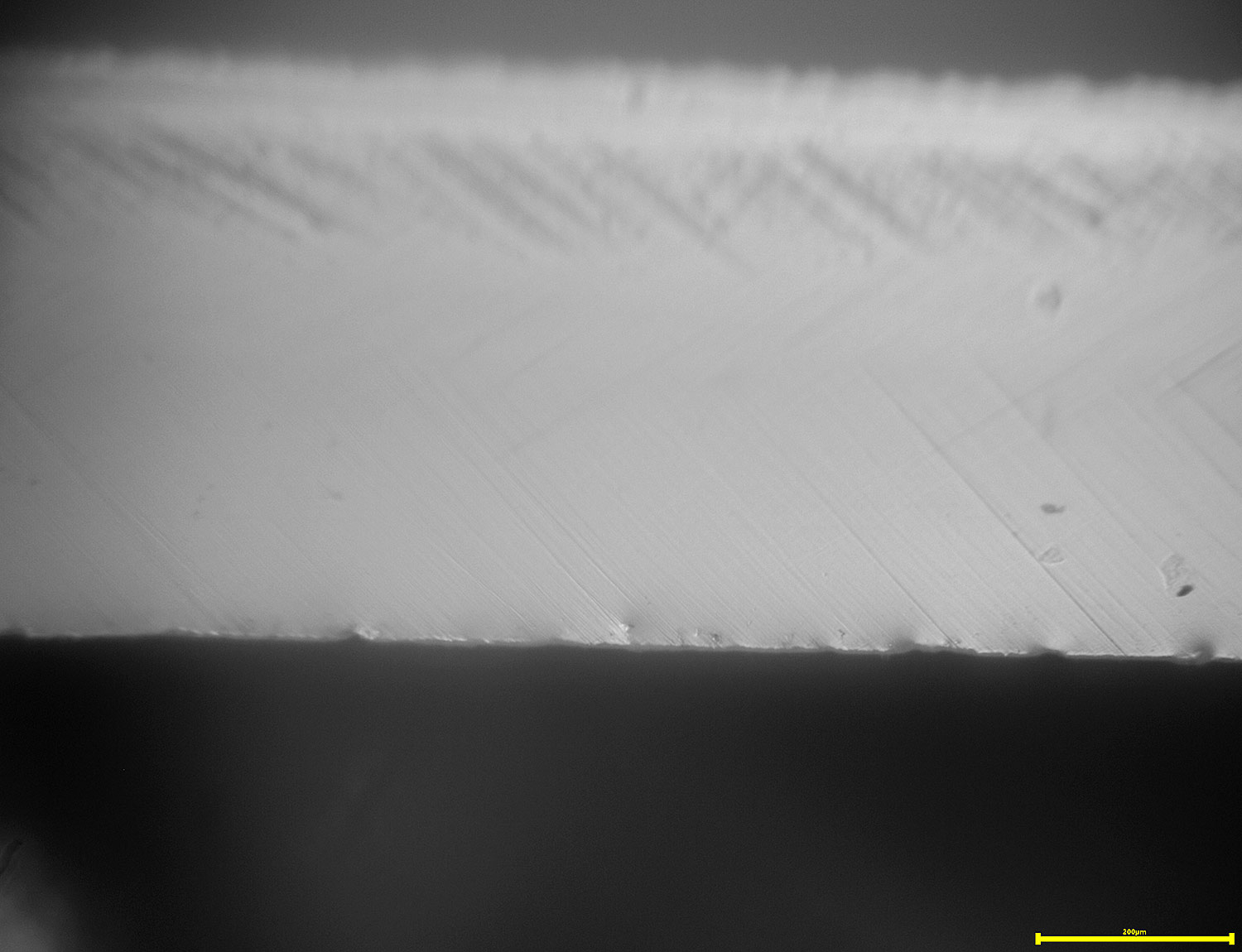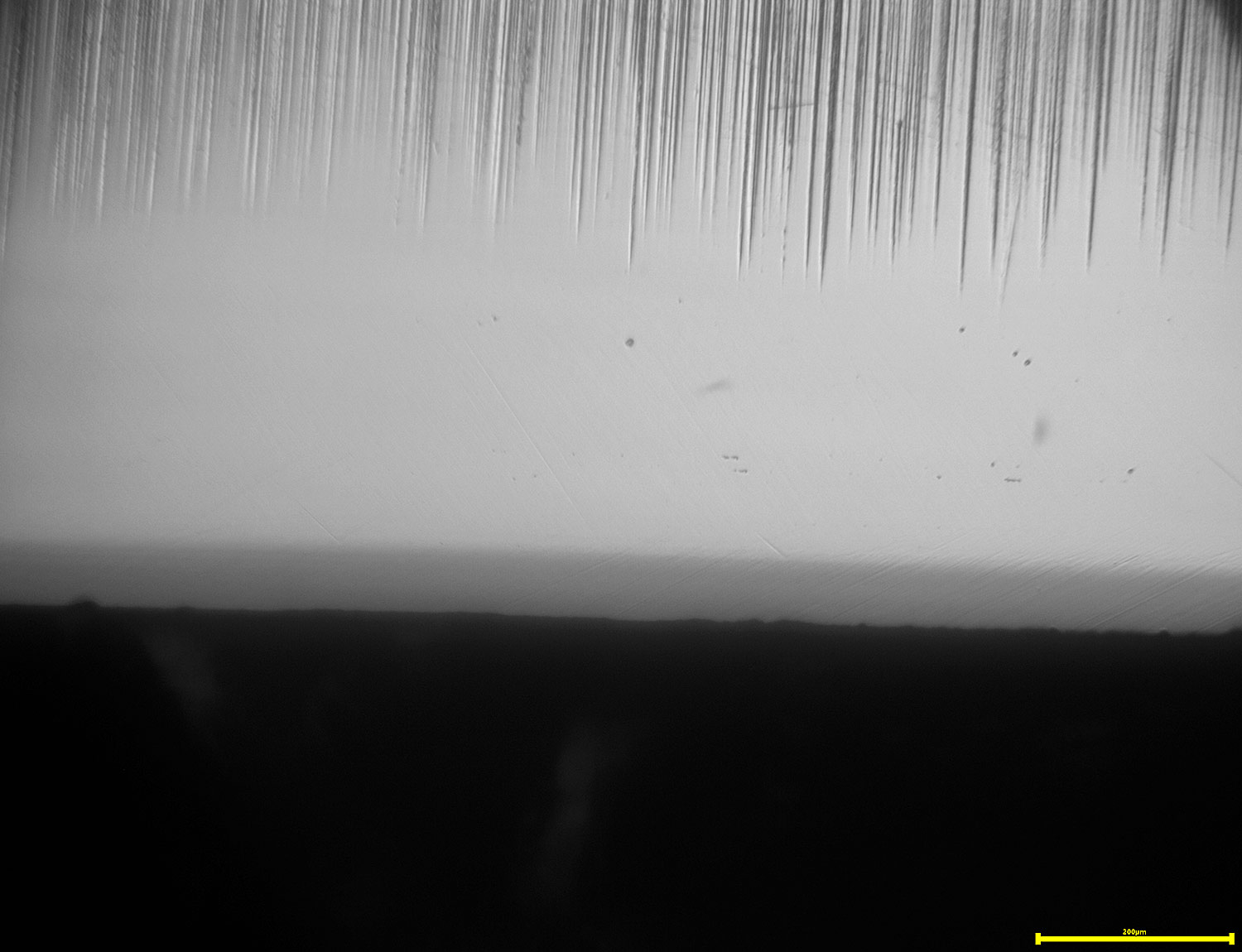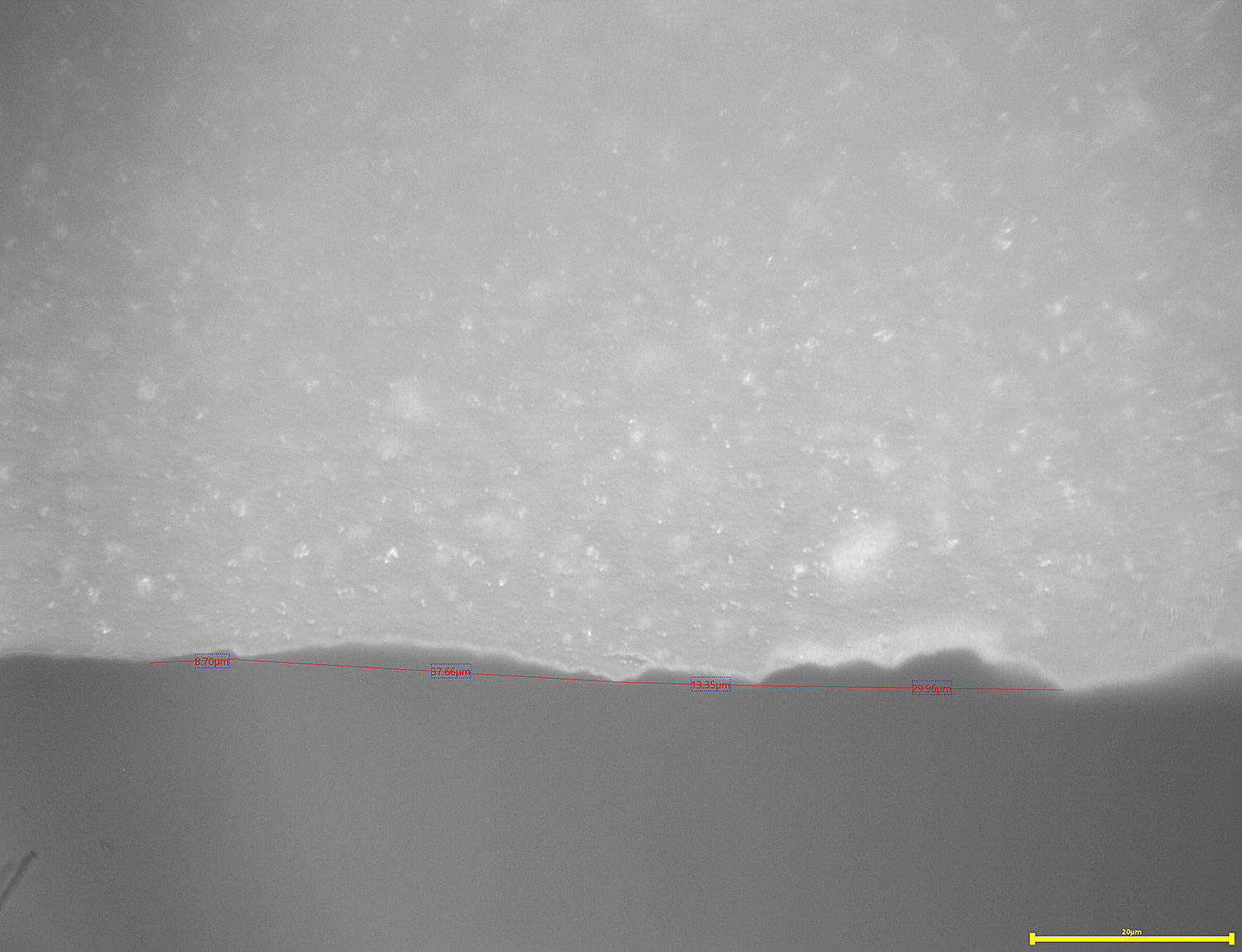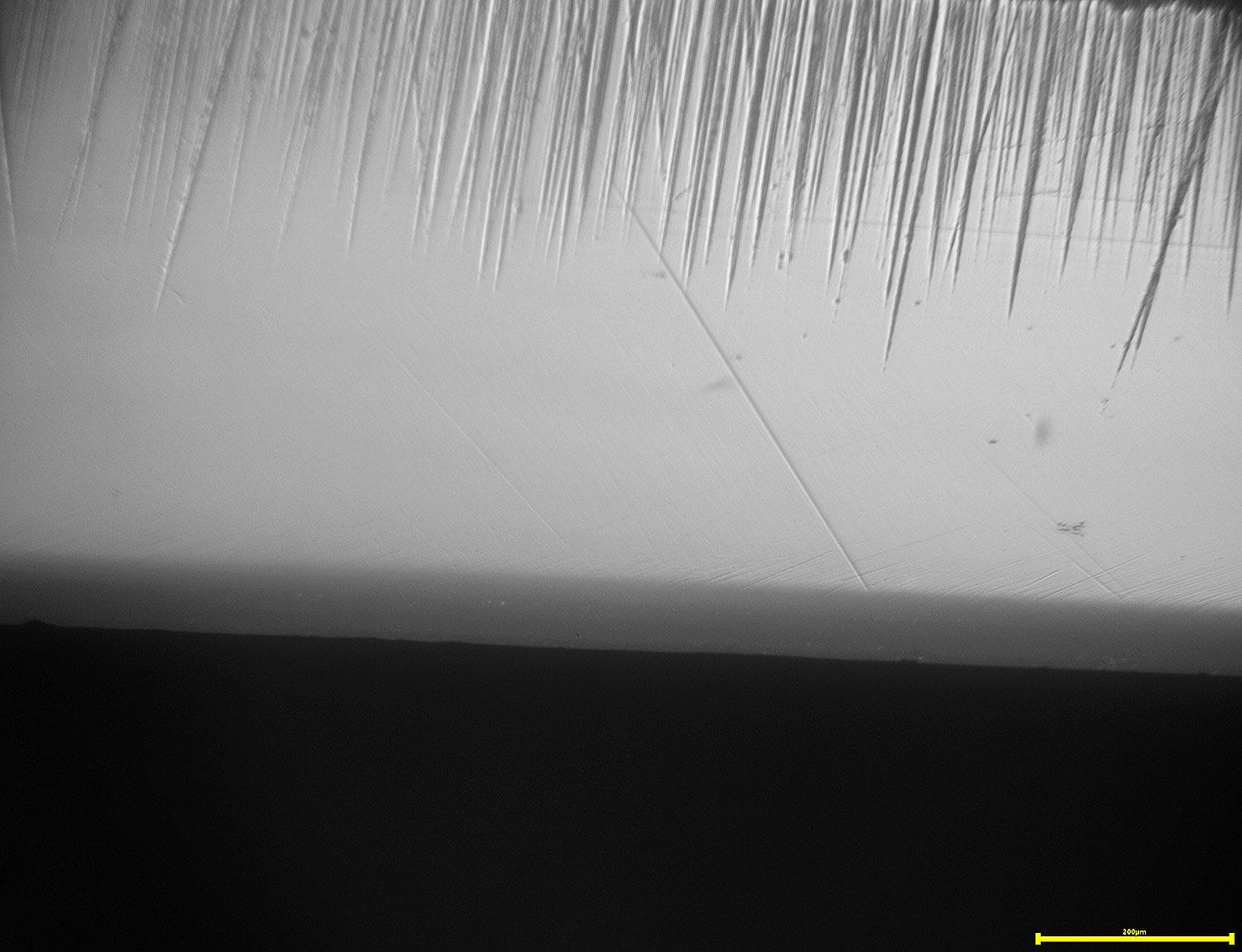How to sharpen a ceramic knife?
Recent › Forums › Main Forum › Techniques and Sharpening Strategies › Basic Techniques and Sharpening Strategies › How to sharpen a ceramic knife?
Tagged: Sharpening ceramic knives
- This topic has 6 replies, 4 voices, and was last updated 12/02/2016 at 12:31 pm by
 Josh.
Josh.
-
AuthorPosts
-
11/30/2016 at 1:06 am #36104
Today I tried again to sharpen a ceramic knife. Sadly to say, without much progress.
I really don’t need to sharpen a ceramic, I’m just thrilled by the challenge, seeing as how my first effort was a disaster. This time I tried it on a black ceramic blank of a Santoku bought from Woodcraft. I had tried once before on this knife and left the edge with chips and nicks all along its length. So this time, I stuck to my 1000-grit diamond stones (edge leading) and seemed to be doing pretty well, except those darn chips wouldn’t seem to go away.
So I reverted to the old method of filing the edge flat to find a new line to sharpen to. Check with the ‘scope…Beautiful! A straight, clean edge! Back to the 1000s and ten light strokes on each side. Check with the USB scope and Bingo! The chips are magically restored! Aaargh!
Having accepted that the 1000s were in fact causing their own chips, I tried some diamond film, since I don’t have the new 1500-grit diamonds yet and I couldn’t expect the 1200/1600 ceramic stones to do much. My first set of film handles is 15 and 9 micron, which normally produce scratches equivalent to 1200 and 1800 grit. But the results were absolutely not what I expected. The bevel faces showed no trace of scratches at 50X magnification. Just a beautiful polish. Oh, poop. Ain’t nothin’ gonna remove them chips.
So what’s the secret to sharpening ceramic blades?
1 user thanked author for this post.
11/30/2016 at 6:27 am #36105I have been doing some research on ceramics and I have a few questions. At what angle are you sharpening the ceramic knife? The brittleness or the composition of the ceramic may be a issue at different angles. Most every site I found stated they are sharpening with a 1200 grit diamond stone or finer. So the new 1500 stone may be the “ticket”. Although I watched some YouTubers start with a 800 grit WE stone and they had success (Click here for video and que point). I also found this device from Japan being advertised in a YouTube video (Click Here) and if he can do it with this “Special” diamond file, we should be able to do a great job on a WE. The diamond stone is a 1200 grit from my research on it. I also have observed with my own sharpening that I was “slapping” the blade with my strokes on occasion. A metal blade would be forgiving of such a action but a ceramic probably wouldn’t be and may “Chip” at random places along the blade. What is the make and model of your knife? I may just buy a ceramic knife to experiment with. This could be a interesting topic if others try it and join in. Would you be willing to show your ceramic knife chips under your USB microscope (in a video) so I have a better idea of what you are looking at?

Eddie Kinlen
M1rror Edge Sharpening Service, LLC
+1(682)777-162211/30/2016 at 9:01 am #36106I just happened to be playing with a ceramic knife from Kyocera last week and got to shave. It’s not amazing yet, but definitely sharp and shaving. I used the 800# then 1000# then 1500# diamond stones and then went to 9, 6, 3, 1 and .5 diamond films. I found that it’s crucial to approach the blade gently with the stones to not “slap” it as mentioned above. I’ve also found in the past that keeping the stones and films clean by routinely dipping them in water really helps because the ceramic turns to fine powder as it’s abraded away and loads up the stones and films quickly. Here’s a pic at 200x showing the edge:
-Clay
Attachments:
You must be logged in to access attached files.
2 users thanked author for this post.
11/30/2016 at 10:12 am #36108I got curious and started playing around some more. What I found was that when using the coarser grits, I had the best success with strokes completely parallel to the edge so I rested the bottoms of my handles on the ball joints and just moved the stones back and forth along the blade. Doing that prevented any chipping. So I reprofiled the blade from 20 dps to 15 dps with that technique and took it all the way to .5 microns with the diamond lapping films. The edge looked great, no chips or anything but it didn’t shave. So I established a micro-bevel at 20 dps with the .5 micron films using strokes more perpendicular to the edge. It resulted in a little chipping but also made the knife easily shaving sharp rather quickly. Next I’ll mount up some .1 micron films and see what that does. In the meantime, here are images at 200x and 2000x:
You can see that there is some chipping though the chips are pretty small.
-Clay
Attachments:
You must be logged in to access attached files.
3 users thanked author for this post.
11/30/2016 at 10:30 am #36111Moving to 0.1 microns made a nice improvement:
The knife is shaving much more smoothly now as well as looking better under magnification.
-Clay
Attachments:
You must be logged in to access attached files.
2 users thanked author for this post.
11/30/2016 at 10:44 pm #36116I had the best success with strokes completely parallel to the edge so I rested the bottoms of my handles on the ball joints and just moved the stones back and forth along the blade. Doing that prevented any chipping.
As I lay in bed last night trying to saw some zees, it occurred to me that strokes parallel to the edge might avoid the chipping problem. Then Clay pops up with the same approach. We’re getting there…. If this is the answer, we need to write a section on the WE Wiki to share this info.
3 users thanked author for this post.
12/02/2016 at 12:31 pm #36135Clay has it down. You have to use diamonds and take the edge to a very high grit to get it hair popping and shaving sharp. I think the quality of the ceramic also plays a roll. If you are wanting to sharpen ceramics I would stick with kyocera while experimenting as they are well established in the ceramic knife world.
Someone should post a video of Tom Blodgett shaving his head with the kyocera ceramics knife…. Super sweet
Clay, try stropping after the .1um films if you haven’t already.
2 users thanked author for this post.
-
AuthorPosts
- You must be logged in to reply to this topic.





